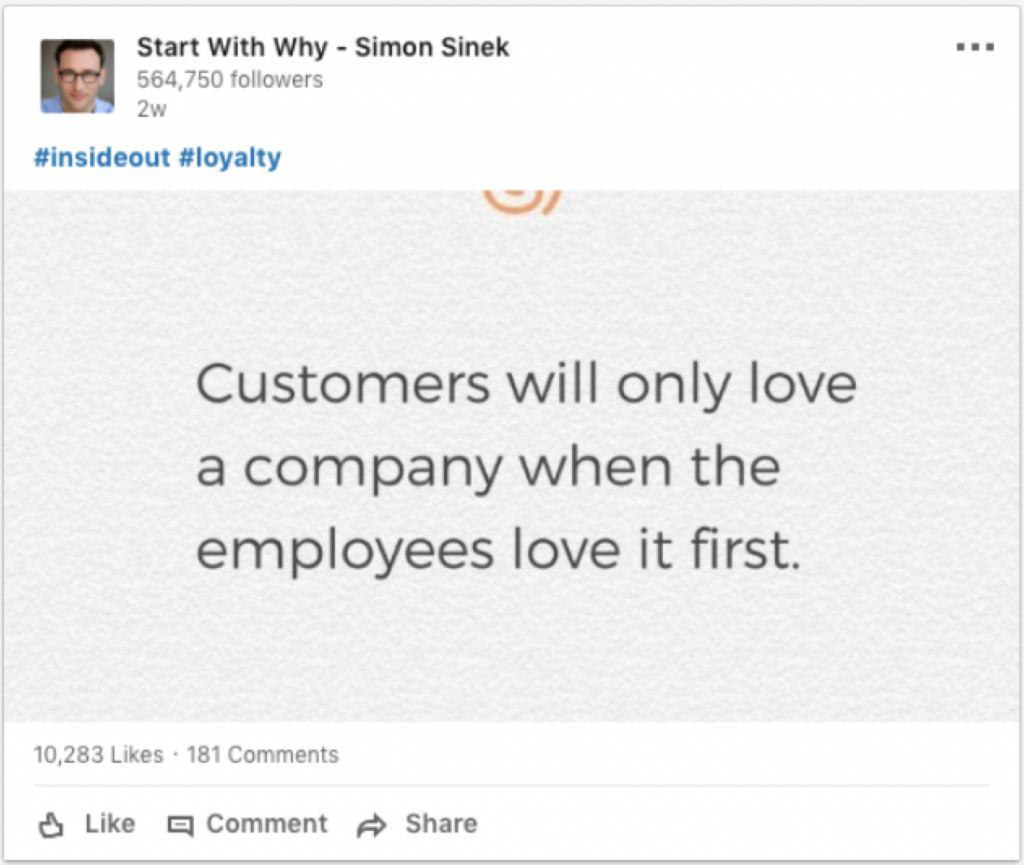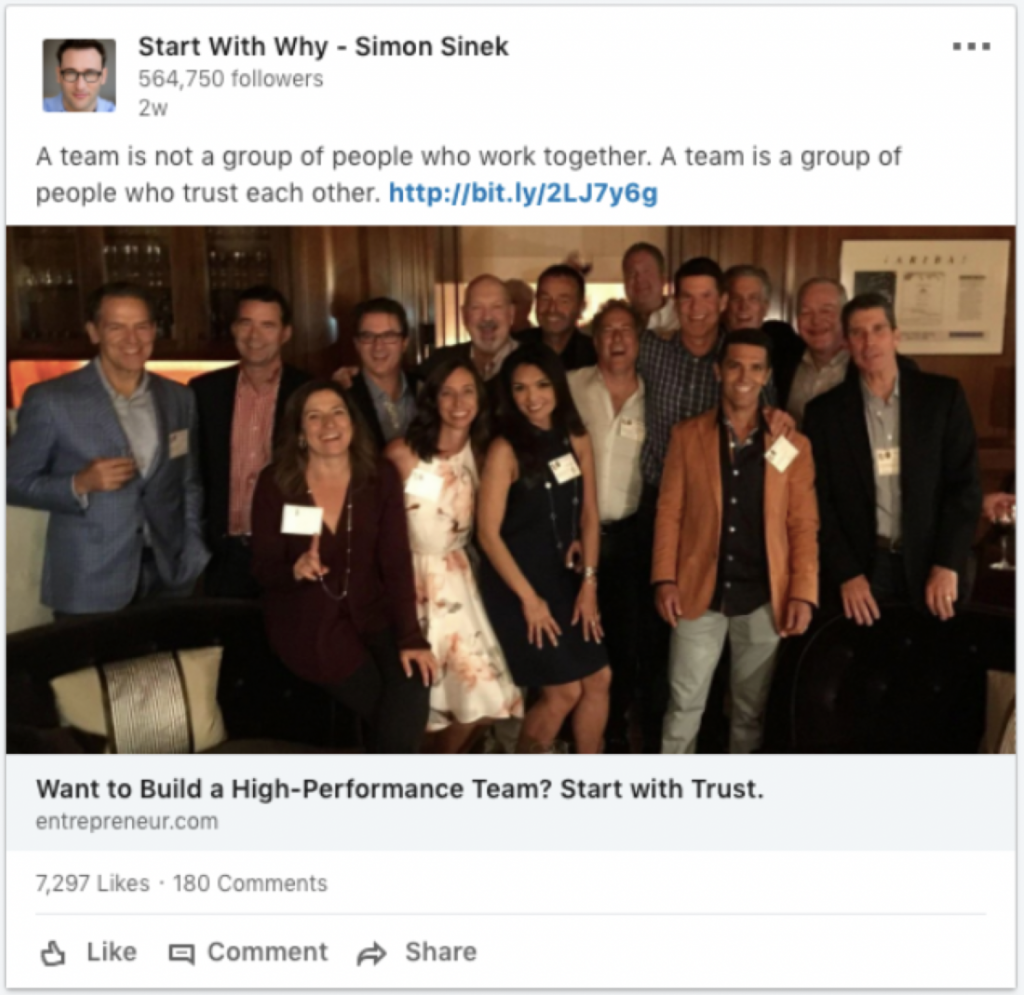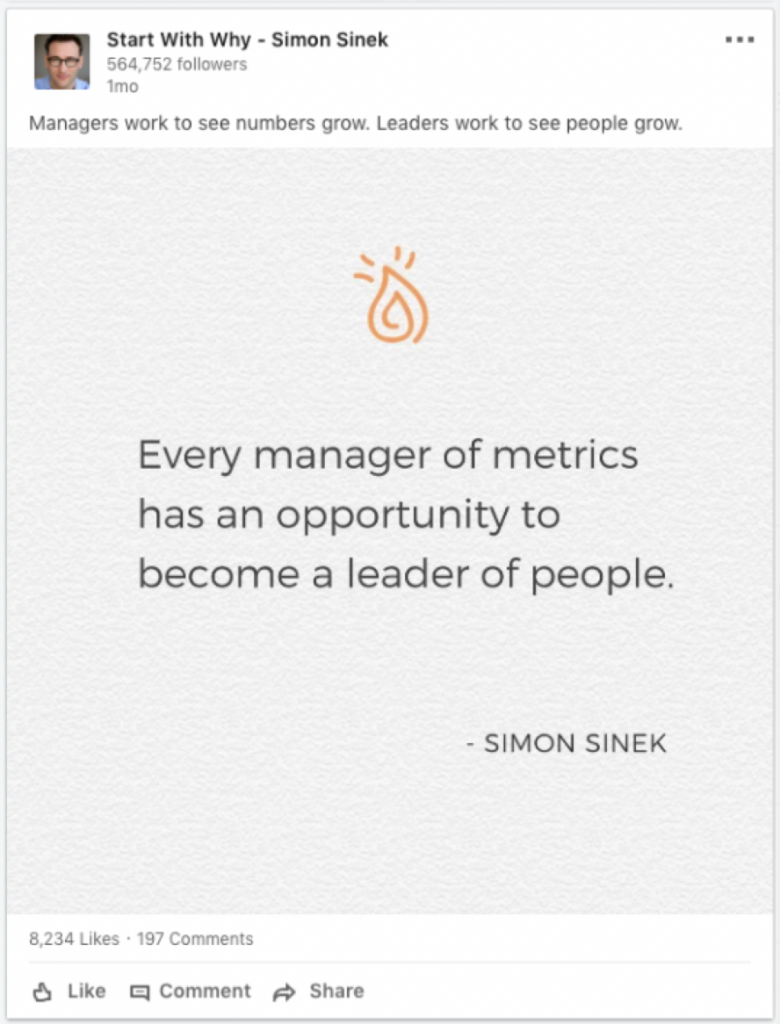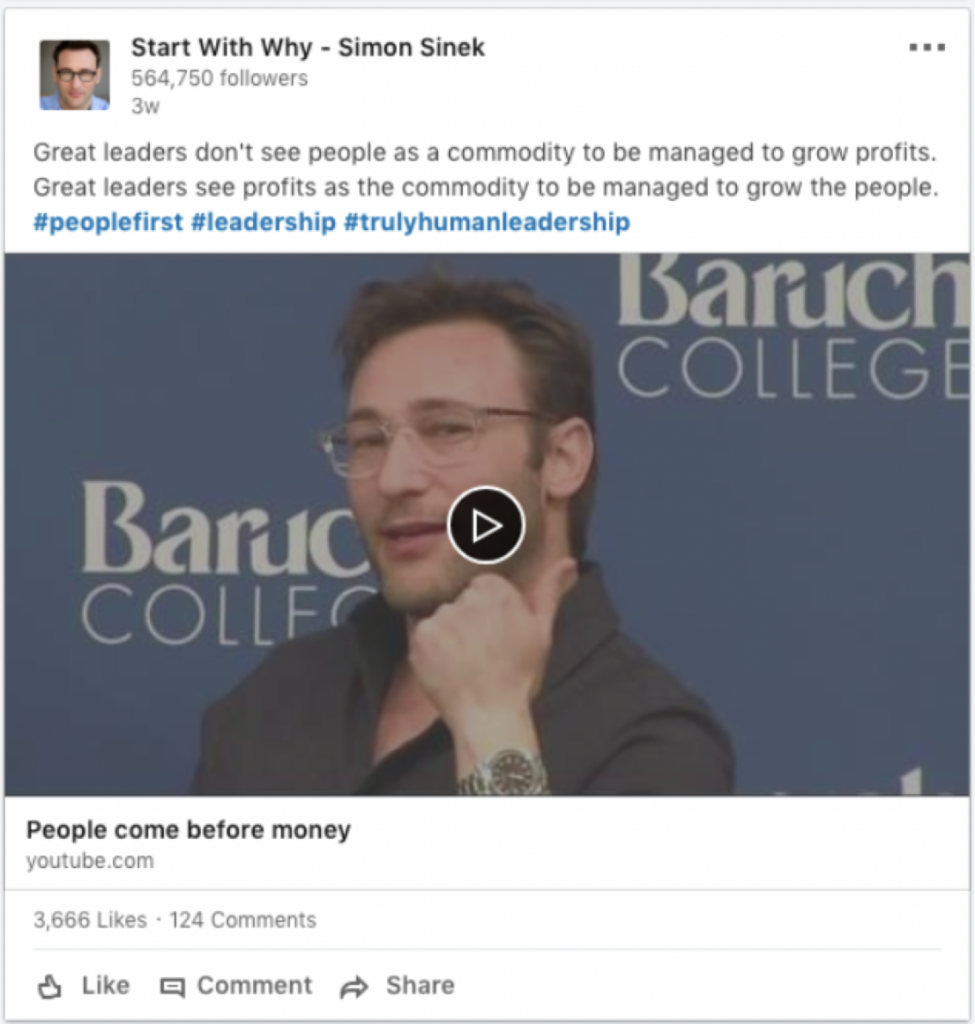How to Sound as Smart as Simon Sinek
Simon Sinek has one of the best LinkedIn feeds around. He posts regularly and when he does, it’s usually with a short little quip that makes you immediately think, “Huh, that’s so true!” Much of his work these days is around leadership, so let me show you a few examples of how he takes current assumptions about leadership and twists them to create proclamations that sound smart and interesting (and get THOUSANDS of likes on LinkedIn).
You’ll see that all of these start with a succinctly written articulation of an existing, widely held belief about the topic – we are talking 10 words or less. Then he manipulates it (flips it, stretches it, replaces words, etc.) to land on a statement that reflects a new truth. Once you identify that existing belief – or “Conventional Wisdom” – there are a number of tactics you can take to test that assumption and then reframe it into something more interesting and provocative.
Let’s dissect some of his recent posts to show you how this all works. And how it can work for you.
TACTIC 1. CHANGE THE BEGINNING
In the post below, you’ll see Sinek articulated a seemingly obvious statement about companies: to be successful they need customers to love them. Obvious, right? We’ll summarize that conventional wisdom as “Customers need to love a company.”
From there, you flip the beginning part of the statement to create a completely different declaration. Change the word “customers” to “employees.” Now, voila! A more interesting POV. In order to be successful, employees (not just customers) need to love a company.
Conventional Wisdom: Customers need to love a company
New Insight: Employees need to love a company
Taking the articulation of the conventional wisdom and changing the first word changes the entire meaning of the statement, making it feel more insightful. With this new reframe, all that’s left is to rewrite the new insight into something a bit more poetic and meme-worthy. And here you go:

TACTIC 2. CHANGE THE END
The next trick is to change the last word of the statement that summarizes the conventional wisdom rather than the first word.
In this example, Sinek wants to make a point about the qualities of great leaders. The widely-held and impossible to refute conventional wisdom is that good leaders are great teachers. But swap out the last word of that sentence and you now have a more interesting and insightful observation.
Conventional Wisdom: Good Leaders are teachers
New Insight: Good Leaders are students
Now you have the insight statement you need to create a social post that generates a bunch of likes.

TACTIC 3. CHANGE THE MIDDLE
You’ve seen how changing just one word at the beginning or end of a seemingly obvious observation statement can change everything. The third trick is to change a word in the middle. This is usually the verb that ties the beginning and end of the statement together.
To make a point about teamwork, Sinek simply states the definition of a team: a group of people that work together. If you take that word “work” and swap it out for another verb, you can create a statement that sounds more insightful.
Conventional Wisdom: A team is a group that works together
New Insight: A team is a group that trusts each other
You’ll notice in this case, Sinek was simply sharing and commenting on an existing article that actually has the word “trust” in the title. His comment is simply drafting off of that. But his comment summarizes the contrast between merely working together and trusting each other, helping to make his point more forcefully and clearly.

TACTIC 4. CHANGE BOTH THE BEGINNING AND THE END
Alright, you’re now ready to advance to the next level of word play.
In this post, Sinek takes a piece of conventional wisdom – managers work to see the numbers grow – and pens a post that changes both the beginning and the end of that statement.
Conventional Wisdom: Managers work to see the numbers grow
New Insight: Leaders work to see their people grow
Simple enough. Here’s the post:

TACTIC 5. SWAP THE BEGINNING AND THE END
This fifth tactic is a fun one. Take the statement that summarizes the conventional wisdom and swap the words at the beginning with the words at the end and vice versa.
Swapping the words “people” and “profits” leads to some an interesting new take on the role of profits within a company.
Conventional Wisdom: People are a commodity to be managed to grow profits
New Insight: Profits are a commodity to be managed to grow people
This reframe actually led to an entire speech, not just a small, one-off social post.

I’m not sure exactly what Simon Sinek’s approach is, but I like to think that he identifies all the conventional wisdom around a given topic first. Then he interrogates it by conducting his own research or using someone else’s until he can reframe that truth in a new, more insightful way.
And if that’s the case, that means anyone can sound as smart as Simon Sinek. The key is listing out the assumptions about a consumer, product or brand BEFORE doing research. Too often, we do the research first hoping it will lead us to new insights. But that’s a bit like flying blind. You have to paint a picture of the current reality before you can smash it and create an alternate reality for your client.